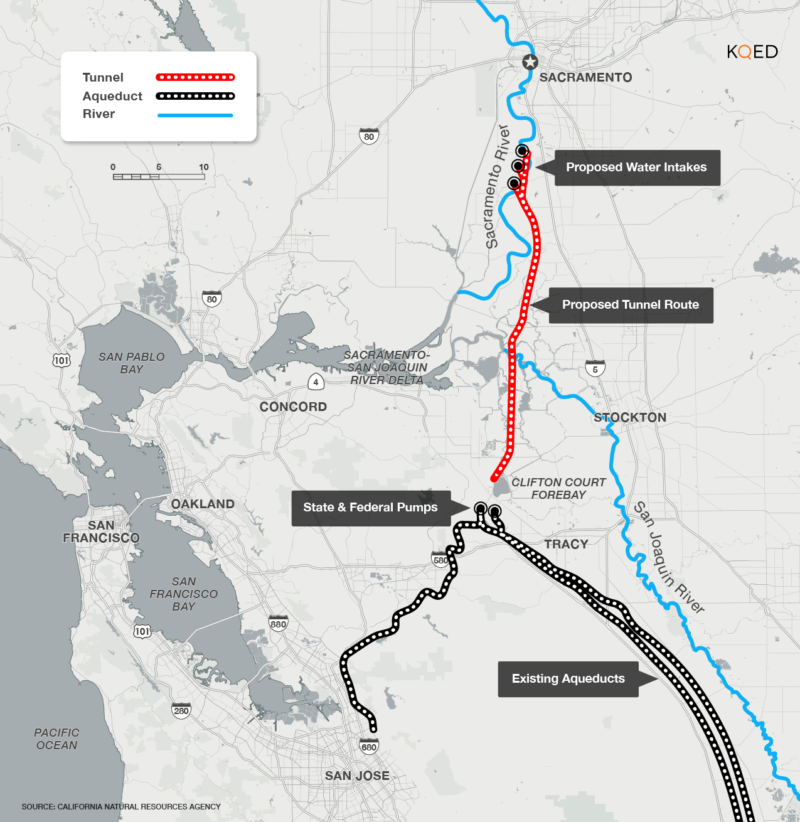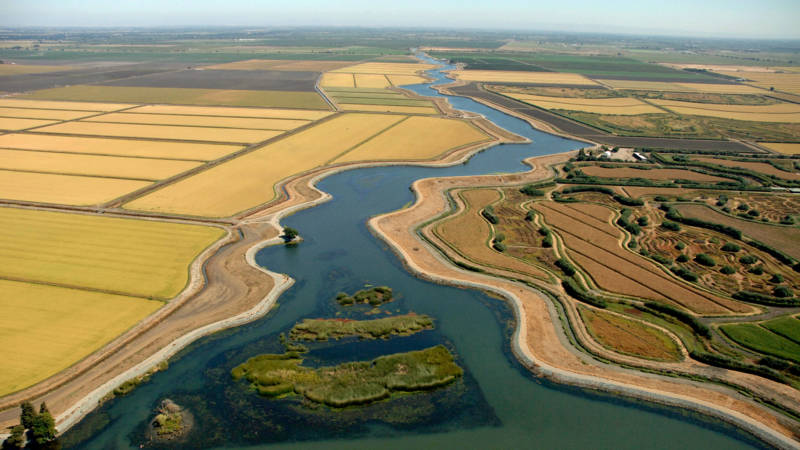California’s biggest water project in decades appears to be in limbo after a key irrigation district voted not to help underwrite Gov. Jerry Brown’s plan to build two giant tunnels that would re-engineer water transport in the state.
The no-vote at the Fresno-based Westlands Water District — the largest agricultural water supplier in the U.S. — puts the $17 billion project’s funding on shaky ground. Will other water districts pick up the slack? Other large water agencies considering participating in the project are set to vote soon. Another key player, Los Angeles’ Metropolitan Water District , will vote on October 10. The Santa Clara Valley Water District, based in San Jose, will weigh in a week later. But with the loss of Westland’s support, some are left wondering if the controversial project is already doomed.
KQED’s Brian Watt spoke with Paul Rogers, managing editor for KQED’s Science unit and the environment writer for the San Jose Mercury News, about the delta tunnels project and what may lie ahead.
Brian Watt: This is a project that is touted as benefiting both the delta environment and water consumers. Remind us how these delta tunnels are supposed to work.
Paul Rogers: When you talk about water in California, the big picture is that three-quarters of all the rain and the snow falls in the northern part of the state and three-quarters of the people live in the south.

So, for the last 75 years or so, we’ve tried to figure out how to move water from north to south. Right now, in the delta we have these giant pumps near Tracy. What happens is when we pump water south, they grind up and kill fish like salmon and smelt and as those species have gotten endangered, less water at certain times of the year. So, Jerry Brown’s idea is let’s build these two tunnels, 40-feet high, costing three times what the Bay Bridge costs, to take the water from farther north in the delta and rely on these pumps less, so people can get the water more reliably.

